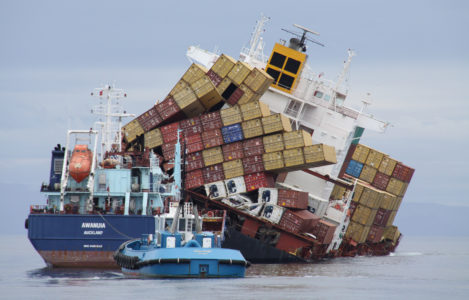Why insurers are sleeping uneasily
3rd October 2015
This article examines important measures aimed at curbing excessive costs by bringing some uniformity to the response of coastal states to major incidents.
Why insurers are sleeping uneasily
The reinsurers of the International Group of P&I Clubs (IGP&I) have had their fingers badly burnt with the Rena and Costa Concordia wreck removal operations, which set new precedents for state intervention and project costs.
It is reminiscent of the US mantra, when OPA 90 was published: ‘you spill, we bill’, adjusted now to read ‘you ground, we pound’.
Although neither of these ships was a laden crude oil tanker, being a container vessel and passenger liner respectively brought other particular problems and challenges.
The potential cost of removing an oil tanker, whether aground in Italy, New Zealand or other places, combined with oil pollution liabilities arising from such an incident, are enough to ensure that the international insurance market leaders continue to sleep nervously. This is especially so when one factors in a global surplus of capital chasing paltry returns, ensuring a continued soft insurance market and correspondingly low rates. Fortune has however provided some reprieve as, at the time of writing, and as summer turns to autumn in the northern hemisphere, insurers are benefitting from an unprecedentedly benign set of claim statistics. So benign that even H&M insurers are actually reported to be making a profit.
We shipping lawyers do not have to grapple with such macroeconomic issues. Our lot is to be dealing with the more immediate demands of an oddly drafted charterparty agreement, compound LMAA interest rate awards or in trying to make sense of the evidence of crew members whose recollection of events is strangely at odds with the AIS or VDR record.
Meanwhile, important measures are progressing to curb these excess costs by bringing some uniformity to the response of coastal states to major incidents.
First in this process has been the Nairobi Convention on the Removal of Wrecks, which came into force in April 2015 and which we have already outlined in these pages. The convention has a long way to go before there is widespread implementation, but it is a start.
Then IGP&I set up a large casualty working group and reported following a study into the reasons why removal costs had escalated in the previous ten years.
Hot on the heels of that, Lloyd’s of London, from where many reinsurers operate, circulated its paper on the Challenges and Implications of Removing Shipwrecks in the 21st Century. Now, IGP&I has embarked on a pragmatic campaign to promote a standard set of principles to govern a state’s response to such cases. In its Memorandum of Understanding between the International Group of Protection and Indemnity Associations [and the signatory state agency] Regarding the Response to Major Maritime Casualties and Incidents, IGP&I seeks to sign up governments to a set of guidelines.
As this is the clubs’ initiative, these intended guiding principles are not being promulgated under SOLAS or via the IMO. For one thing, that would involve a partial redraft of the Nairobi Convention and liability insurers are anxious to press on with a hoped-for change in mindset among coastal states.
Moreover, an international convention is intended to be a legal device, not a best practice template, although the latter was achieved with the ISM Code under SOLAS with much success.
The MoU runs to a short two and a half pages. The thrust is to establish early communication and exchange of information about the casualty and its cargo, the identification of national and local authorities, including their personnel actually dealing with the incident, as well as the identification of other known interest groups. The latter might include the local fishing industry, for example. It then promotes the setting up of communication channels between key decision makers to help avoid misunderstandings, to keep the authorities informed on the response and the options in terms of methodology.
Specific mention is made that this should take into account not only the safety of navigation, the marine environment and technical difficulties, but also – and this is the nub of it for the clubs – the relative cost of differing response measures and related time scales. On the ground, the proposal is that rolling reporting conferences should start immediately as the means by which progress and plans can be discussed and agreed, differences identified and so resolved.
There are preparedness commitments including joint training as well as for post incident evaluation. One can see that in practice both the latter might be a challenge to implement and follow up, but the stakes are high and if coastal authorities can be assisted and guided by those who pay for the high cost of wreck removal and have the benefit of hard won collective experience, then the effort might be rewarded.
The Australian maritime safety authority AMSA and its equivalents in New Zealand, Singapore and South Africa are already signed up, the UK is reportedly interested, while discussions are underway both with the EU and with ROCRAM, the operative network of South American marine administrations.
Finally, the MoU is not intended to be legally binding, nor does it set out to override local law and procedures. However, procedures may not even exist in some countries. Henceforth where an incident occurs in a non-MoU country, the fact that some major administrations have committed to uniform good practice guidelines can only help owners and clubs, as well as other non-mutual insurers, to form a collaborative framework for the prompt and efficient handling of future incidents. It will
be interesting to see what the further take up will be.
Simon Tatham is a partner at Tatham Law and founder member of the www.tugadvise.com service. He has more than 30 years’ experience of shipping law.
Reproduced with kind permission of International Tug & OSV magazine. View original article.

